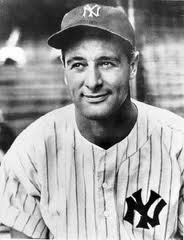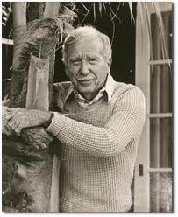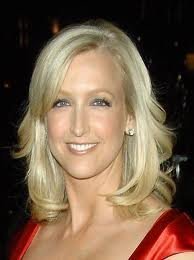
Beer is one of the oldest and most widely consumed alcoholic drinks in the world, and the third most popular drink overall after water and tea. It is produced by the brewing and fermentation of starches, mainly derived from cereal grains—most commonly from malted barley, though wheat, maize (corn), rice, and oats are also used. During the brewing process, fermentation of the starch sugars in the wort produces ethanol and carbonation in the resulting beer. Most modern beer is brewed with hops, which add bitterness and other flavors and act as a natural preservative and stabilizing agent. Other flavoring agents such as gruit, herbs, or fruits may be included or used instead of hops. In commercial brewing, the natural carbonation effect is often removed during processing and replaced with forced carbonation.
Some of humanity's earliest known writings refer to the production and distribution of beer: the Code of Hammurabi included laws regulating beer and beer parlors, and "The Hymn to Ninkasi", a prayer to the Mesopotamian goddess of beer, served as both a prayer and as a method of remembering the recipe for beer in a culture with few literate people.
Beer is distributed in bottles and cans and is also commonly available on draught, particularly in pubs and bars. The brewing industry is a global business, consisting of several dominant multinational companies and many thousands of smaller producers ranging from brewpubs to regional breweries. The strength of modern beer is usually around 4% to 6% alcohol by volume (ABV), although it may vary between 0.5% and 20%, with some breweries creating examples of 40% ABV and above.
Beer forms part of the culture of many nations and is associated with social traditions such as beer festivals, as well as a rich pub culture involving activities like pub crawling, pub quizzes and pub games.
Beer is one of the world's oldest prepared alcoholic drinks. The earliest archaeological evidence of fermentation consists of 13,000-year-old residues of a beer with the consistency of gruel, used by the semi-nomadic Natufians for ritual feasting, at the Raqefet Cave in the Carmel Mountains near Haifa in Israel. There is evidence that beer was produced at Göbekli Tepe during the Pre-Pottery Neolithic (around 8500 BC to 5500 BC). The earliest clear chemical evidence of beer produced from barley dates to about 3500–3100 BC, from the site of Godin Tepe in the Zagros Mountains of western Iran. It is possible, but not proven, that it dates back even further—to about 10,000 BC, when cereal was first farmed. Beer is recorded in the written history of ancient Iraq and ancient Egypt, and archaeologists speculate that beer was instrumental in the formation of civilizations. Approximately 5000 years ago, workers in the city of Uruk (modern day Iraq) were paid by their employers with volumes of beer. During the building of the Great Pyramids in Giza, Egypt, each worker got a daily ration of four to five litres of beer, which served as both nutrition and refreshment that was crucial to the pyramids' construction.
As of 2007, the brewing industry is a global business, consisting of several dominant multinational companies and many thousands of smaller producers ranging from brewpubs to regional breweries. As of 2006, more than 133 billion litres (35 billion US gallons), the equivalent of a cube 510 metres on a side, of beer are sold per year, producing total global revenues of US$294.5 billion. In 2010, China's beer consumption hit 450 million hectolitres (45 billion litres), or nearly twice that of the United States, but only 5 per cent sold were premium draught beers, compared with 50 per cent in France and Germany.
A recent and widely publicized study suggests that sudden decreases in barley production due to extreme drought and heat could in the future cause substantial volatility in the availability and price of beer.
The history of breweries in the 21st century has included larger breweries absorbing smaller breweries in order to ensure economy of scale. In 2002, South African Breweries bought the North American Miller Brewing Company to found SABMiller, becoming the second largest brewery, after North American Anheuser-Busch. In 2004, the Belgian Interbrew was the third largest brewery by volume and the Brazilian AmBev was the fifth largest. They merged into InBev, becoming the largest brewery. In 2007, SABMiller surpassed InBev and Anheuser-Bush when it acquired Royal Grolsch, brewer of Dutch premium beer brand Grolsch in 2007. In 2008, when InBev (the second-largest) bought Anheuser-Busch (the third largest), the new Anheuser-Busch InBev company became again the largest brewer in the world.
As of 2020, according to the market research firm Technavio, AB InBev remains the largest brewing company in the world, with Heineken second, CR Snow third, Carlsberg fourth, and Molson Coors fifth.
- 2 pounds ground beef
- 1 onion, chopped
- Salt and pepper to taste
- 1 (12-ounce) package frozen peas
- 1 (10-3/4-ounce) can cream of celery soup
- 1/2 cup milk
- 1/4 cup sour cream
- 2 cups shredded Colby Jack cheese, divided
- 1 (30-ounce) package frozen potato tots, thawed
- Preheat oven to 375º. Coat a 9- x 13-inch baking dish with cooking spray.
- In a large skillet over medium-high heat, cook beef, onion, salt, and pepper until meat is browned. Add peas and stir. Add soup, milk, sour cream, and 1 cup of cheese; stir to combine.
- Place half the potato tots in baking dish, top with meat mixture, then remaining potato tops. Sprinkle with remaining cheese.
- Bake 25 to 35 minutes, or until the potato tots are cooked through and golden.
1921 – Louis Jourdan, French actor (d. 2015)
1969 – Lara Spencer, American TV personality
HOW TO OBSERVE FATHER’S DAY
Celebrate your father. Explore his favorite hobbies or encourage him to share a story or two. Play a game or take him to one. Enjoy your time with your father and celebrate him.
FATHER’S DAY HISTORY
After the success of Mother’s Day, this special day and its observances began to appear around the United States and the world. However, the road to this national observance was not an easy one.
First Recorded Father’s Day
The first recorded celebration of Father’s Day happened after the Monograph Mining Disaster in West Virginia. The disaster killed 361 men and left around 1,000 children fatherless in December of 1907. Grace Golden Clayton suggested a day honoring all those fathers to her pastor, Robert Thomas Webb. On July 5th, 1908, the community gathered in honor of the men lost in the mining accident. They assembled at Williams Memorial Methodist Episcopal Church South, now known as Central United Methodist Church, in Fairmont, West Virginia.
Other Claims about Father’s Day
In 1910, the YMCA in Spokane, Washington recruited several clergymen with the help of Sonora Smart Dodd to honor fathers throughout the city. The date was set for June 5th but was later changed to June 19th (the 3rd Sunday in June), as many clergymen needed more time to prepare.
Harry C. Meek, a member of Lions Clubs International, claimed that he first had the idea for Father’s Day in 1915. Meek argued that the third Sunday of June was chosen because it was his birthday. The Lions Club has named him “Originator of Father’s Day.” Meek made many efforts to promote Father’s Day and make it an official holiday.
Presidential Intervention
After a visit to Spokane, WA in 1916 to speak at a Father’s Day celebration, President Woodrow Wilson wanted to make the day official, but Congress resisted fearing that the observance would become too commercialized. Once again, a president nearly intervened, but President Calvin Coolidge stopped short of issuing a national proclamation in 1924.
Sonora Smart Dodd continued to work to make Father’s Day a national observance. In 1938, she collaborated with the Father’s Day Council, a group of New York Men’s Wear Retailers, for the commercial promotion of the observance. Many Americans resisted the holiday for decades because of these attempts to commercialize the day.
It wasn’t until 1966, that President Lyndon B. Johnson issued the first presidential proclamation honoring fathers on the third Sunday in June. The holiday wasn’t made an annual event until President Richard Nixon signed it into law, making it a permanent national holiday in 1972 over 50 years after Mother’s Day came into existence.















